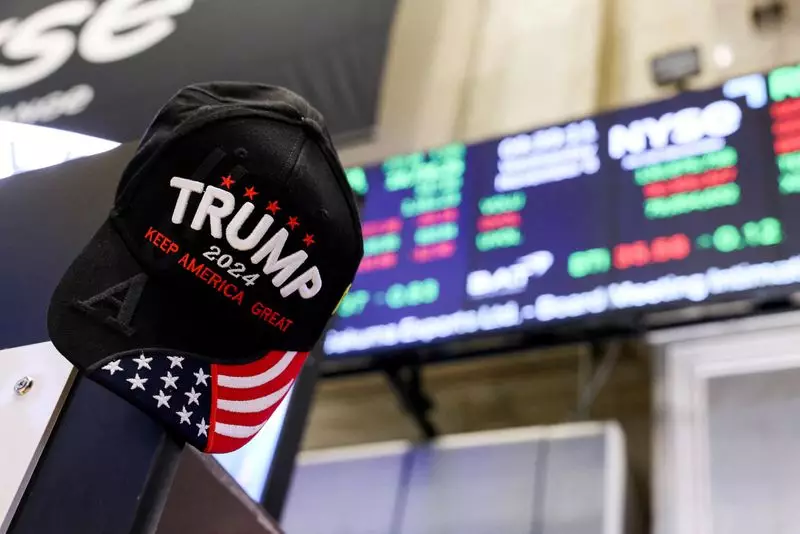In the intricate dance of finance, Wall Street’s major indexes displayed a retreat on Friday, highlighting the tension that arises from conflicting economic indicators and corporate earnings reports. As investors recalibrated, they braced themselves for a week poised to unveil critical economic metrics alongside a Federal Reserve meeting. The technology sector, driven by heavyweights such as Nvidia, bore the brunt of this market pullback, which set the tone for investor sentiment moving forward.
Recent economic data has presented a mixed narrative that may leave investors in a state of unease. Housing market reports exceeded expectations, suggesting a robust sector, while a survey from S&P Global indicated that business activity is cooling, reaching its lowest in nine months as inflationary pressures lingered. This juxtaposition of strong and weak signals raises crucial questions about the future trajectory of monetary policy. Although firms reported an uptick in hiring, which seems to align with the Federal Reserve’s cautious stance, the overall sentiment on consumer confidence took a hit, dropping from a forecasted 73.2 to a final 71.1 as reported by the University of Michigan.
Investors appear to be navigating through the fog of uncertainty surrounding the Federal Reserve’s next moves, particularly as many anticipate no changes to borrowing costs during the upcoming meeting scheduled for January 28-29. The market is also bracing for the possibility of its first interest rate cut as early as June, driving home the feeling of uncertainty that permeates the current market climate.
Turning towards the upcoming week, experts warn that a flood of pertinent data will surface, including key inflation statistics and economic growth indicators. Additionally, there looms the specter of policy adjustments from the newly installed Trump administration. Observers note the anxiety revolving around potential trade tariffs that could have far-reaching implications for inflation and Fed rate cuts following Trump’s recent declarations about upcoming tariffs targeting various nations, with significant announcements expected as early as February 1.
Scott Helfstein, head of investment strategy at Global X, encapsulated the mood by noting, “There is anticipation of a really big news week ahead,” which shines a light on the concerns that have been multiplying within the marketplace.
The numbers tell a compelling story. The Dow Jones Industrial Average saw a decline of 140.82 points, or 0.32%, closing at 44,424.25. The S&P 500 followed suit, losing 17.47 points to settle at 6,101.24, while the Nasdaq Composite dipped 99.38 points, equating to a 0.50% loss, finalizing the day at 19,954.30. Despite the drops, the indexes had seen an upward trend over the previous two weeks, with the S&P 500 climbing 1.74% and the Nasdaq enjoying a 1.65% increase during the same period.
Within the S&P 500, sectors presented a mixed performance. Communication services led advances with a 1.09% rise, while utilities followed closely behind. The standout performer in the utilities sector was NextEra Energy Inc, boasting a remarkable 5.2% increase, marking it as a significant gain in an otherwise tepid trading day.
Nevertheless, the technology sector, initially buoyed by optimism, ended up facing substantial scrutiny. Notably, semiconductor giant Texas Instruments forecasted earnings lower than market expectations due to inventory concerns, leading to a steep 7.2% drop in its shares. Following this downturn, Nvidia, recognized as a leader in AI chips, also faltered, recording a 3.1% loss. Other tech stalwarts like Microsoft and Tesla contributed to the sector’s drag with minor declines of 0.6% and 1.4%, respectively.
The market landscape, amid its ebb and flow of conflicting data, encapsulates the essence of inherent uncertainties. As traders maneuver through the intricacies of economic statistics, earnings reports, and political developments, one thing remains clear—investor confidence will hinge on the outcomes of the upcoming week. With economic data poised to spotlight inflationary pressures and employment trends, observers will be keenly watching how these factors may influence the Federal Reserve’s monetary policy decisions in the months ahead, shaping the contours of an ever-evolving market environment.

